Underground Water Storage Tanks
Recently, I had the opportunity to observe firsthand the installation of an underground water storage tank for the purpose of fire-fighting in rural western Howard County, Maryland. An underground water storage tank can serve as a water source for firefighters in an area where hydrants connected to water mains are either unavailable or located at great distances from each other. Underground water storage tanks provide greater fire safety, are more compact and visually unobtrusive when compared to aboveground models, and could represent cost savings to local government agencies as well as homeowners.
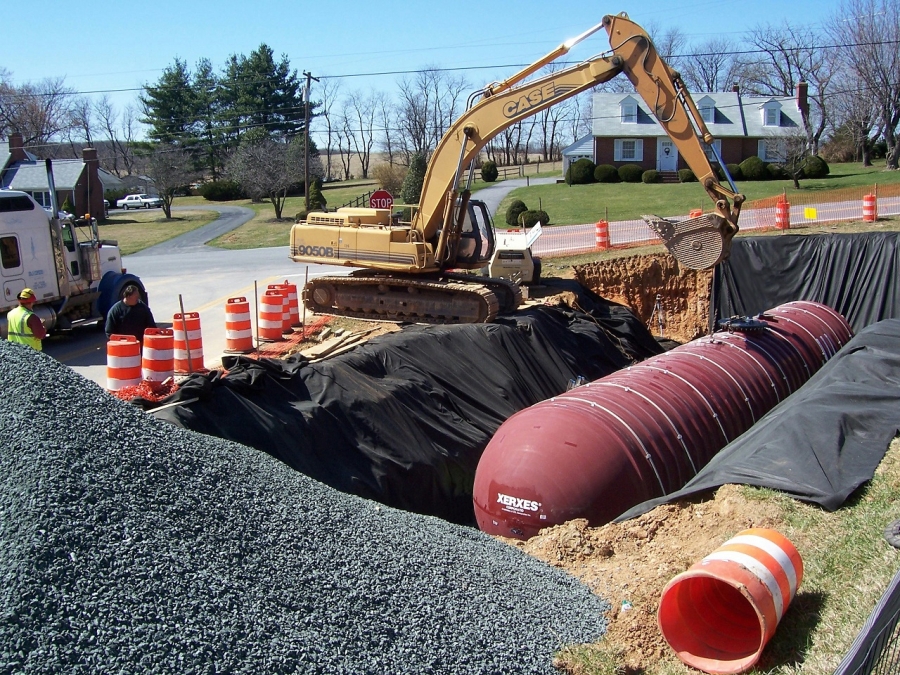
The project scope included installing a 30,000 gallon underground water storage tank on a narrow wedge of county property. The fiberglass tank, which was manufactured by the Xerxes Corporation, was 10'-0" in diameter and more than 55'-0" long -- requiring excavation down to 18'-0". Once the construction crew finished excavation, they lined the base of the excavation pit with gravel and installed rectangular concrete slabs called “deadmen” (installed so that the tank will not rise on accumulated groundwater while in service), each of which weighed more than two tons. After arriving via flatbed truck, a crane lowered the tank into the excavation pit and secured it with straps and turnbuckles to the deadmen.
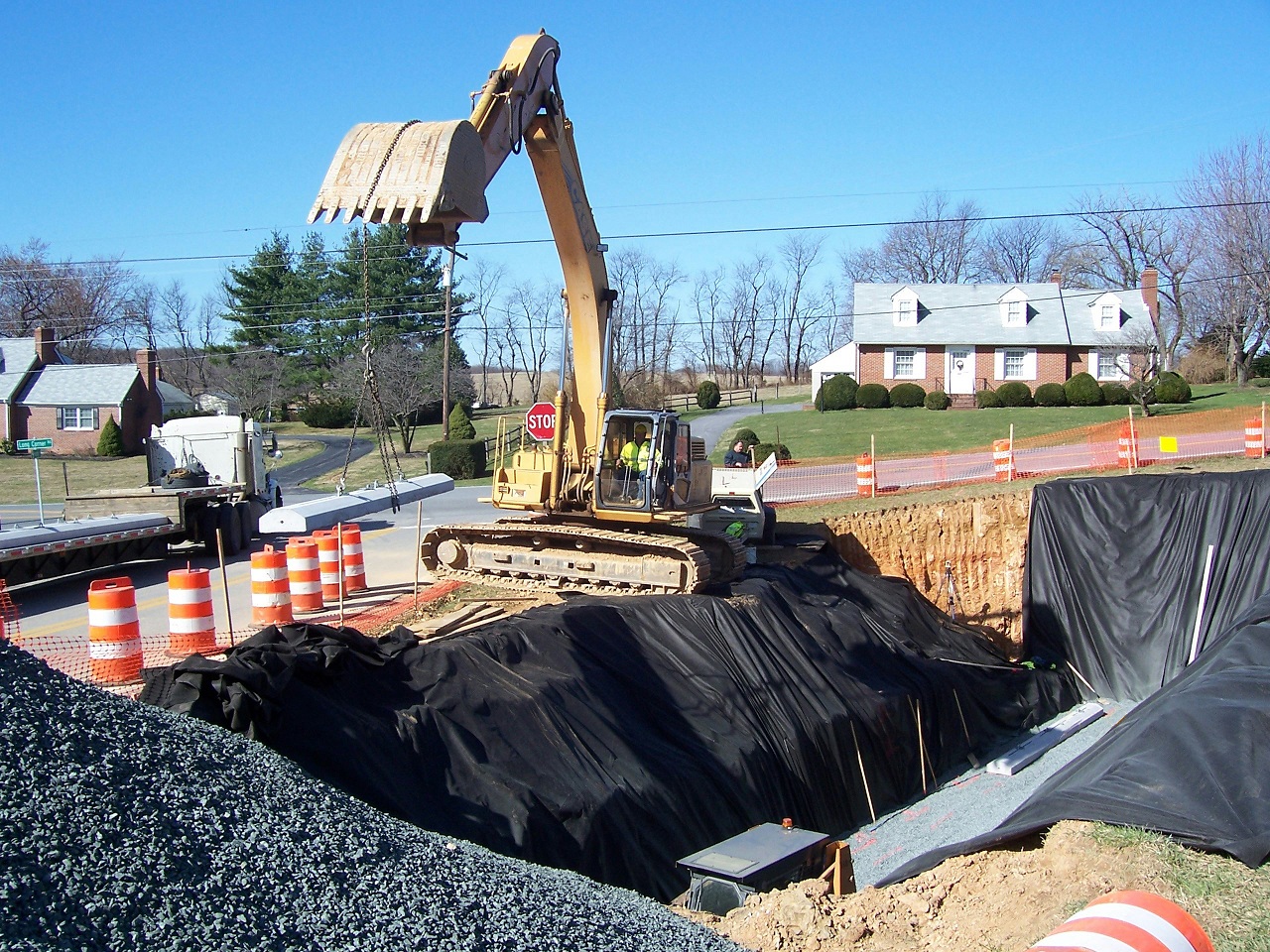
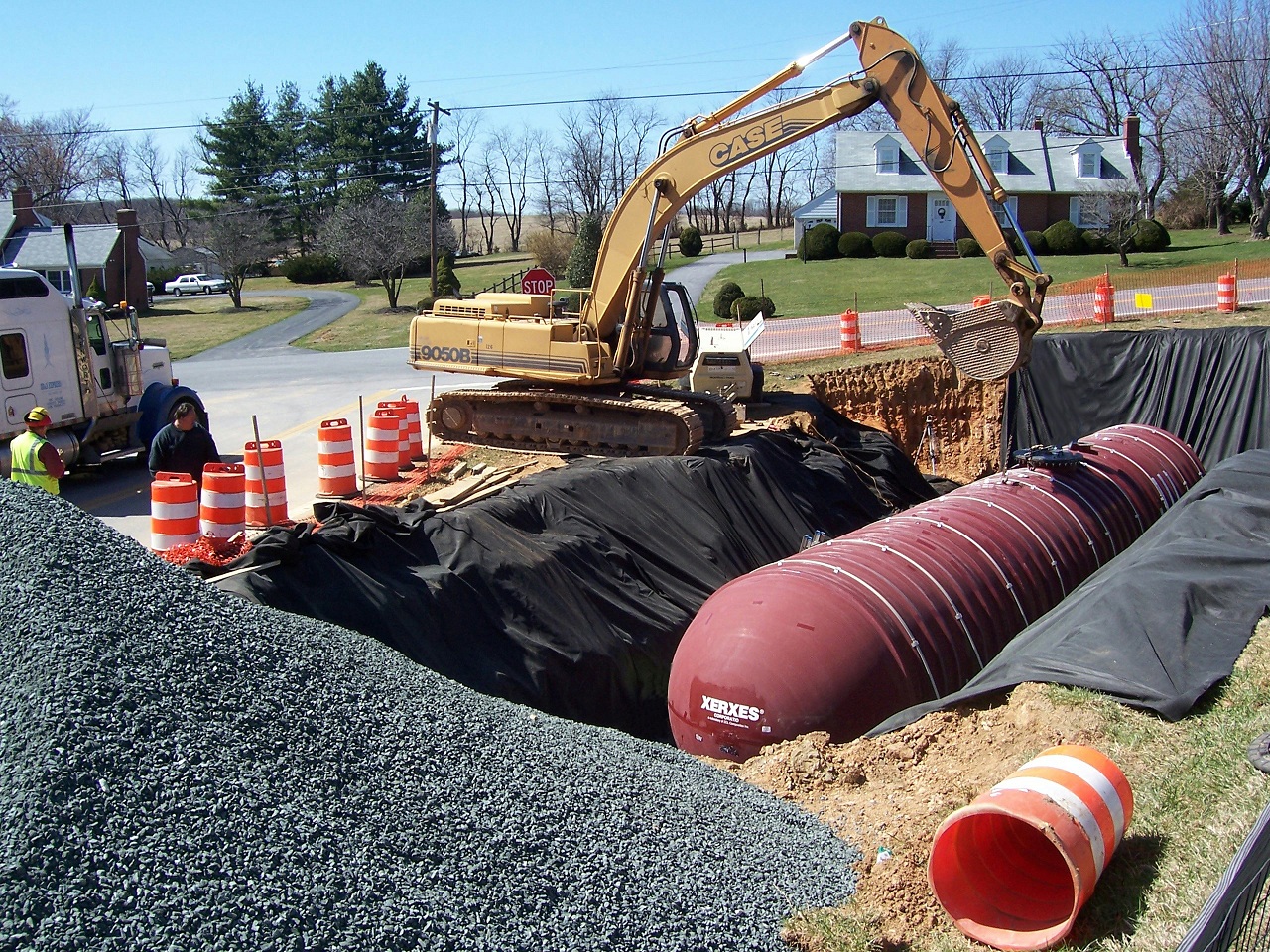
After the tank was installed, the construction crew filled the excavation pit with gravel, leaving only the aboveground fittings visible (hydrant connection, filling standpipe, and capacity gauge). Adjacent to the fittings, the construction crew paved a parking pad so that emergency vehicles can pull off the main road and take on water.
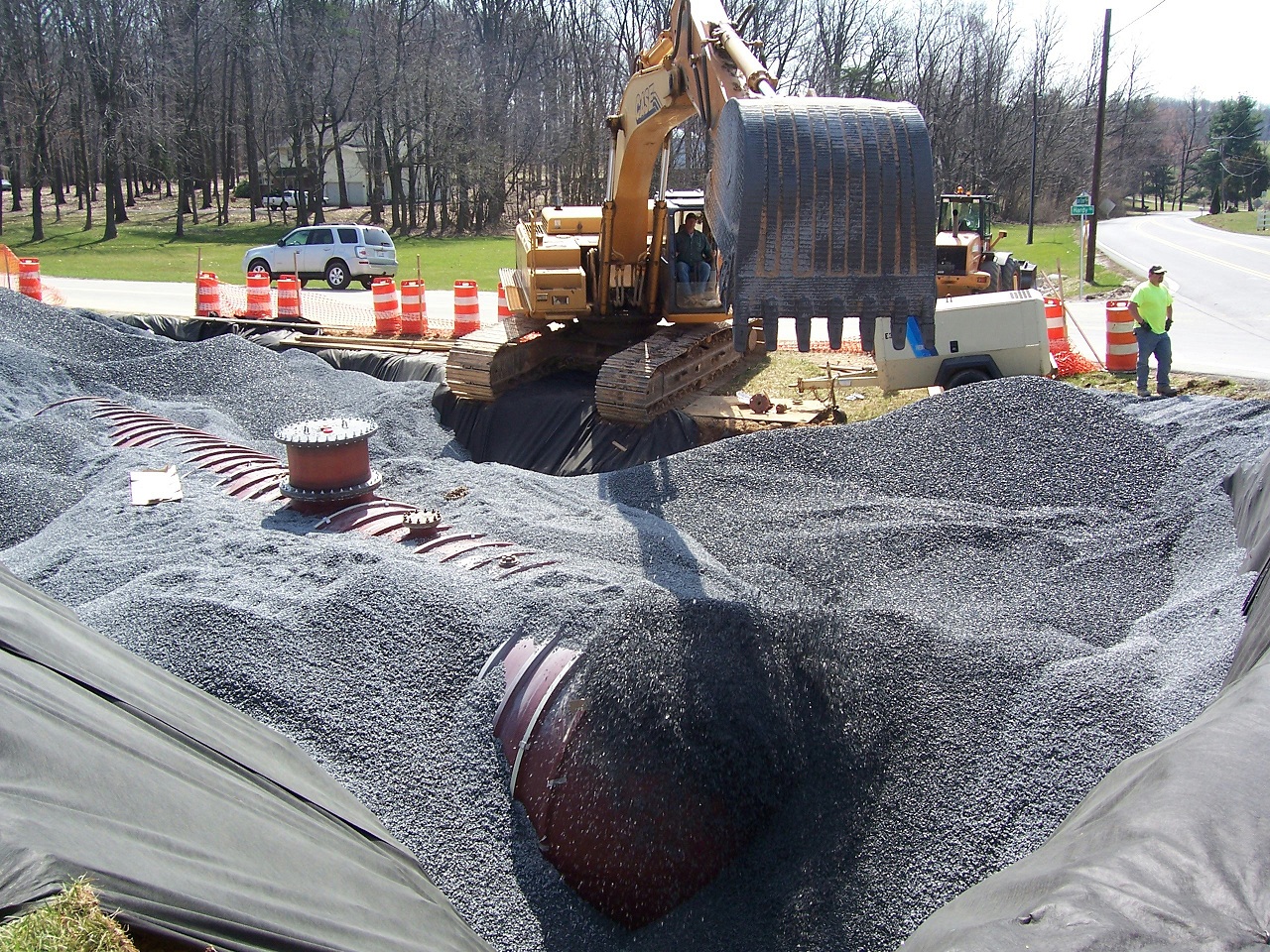

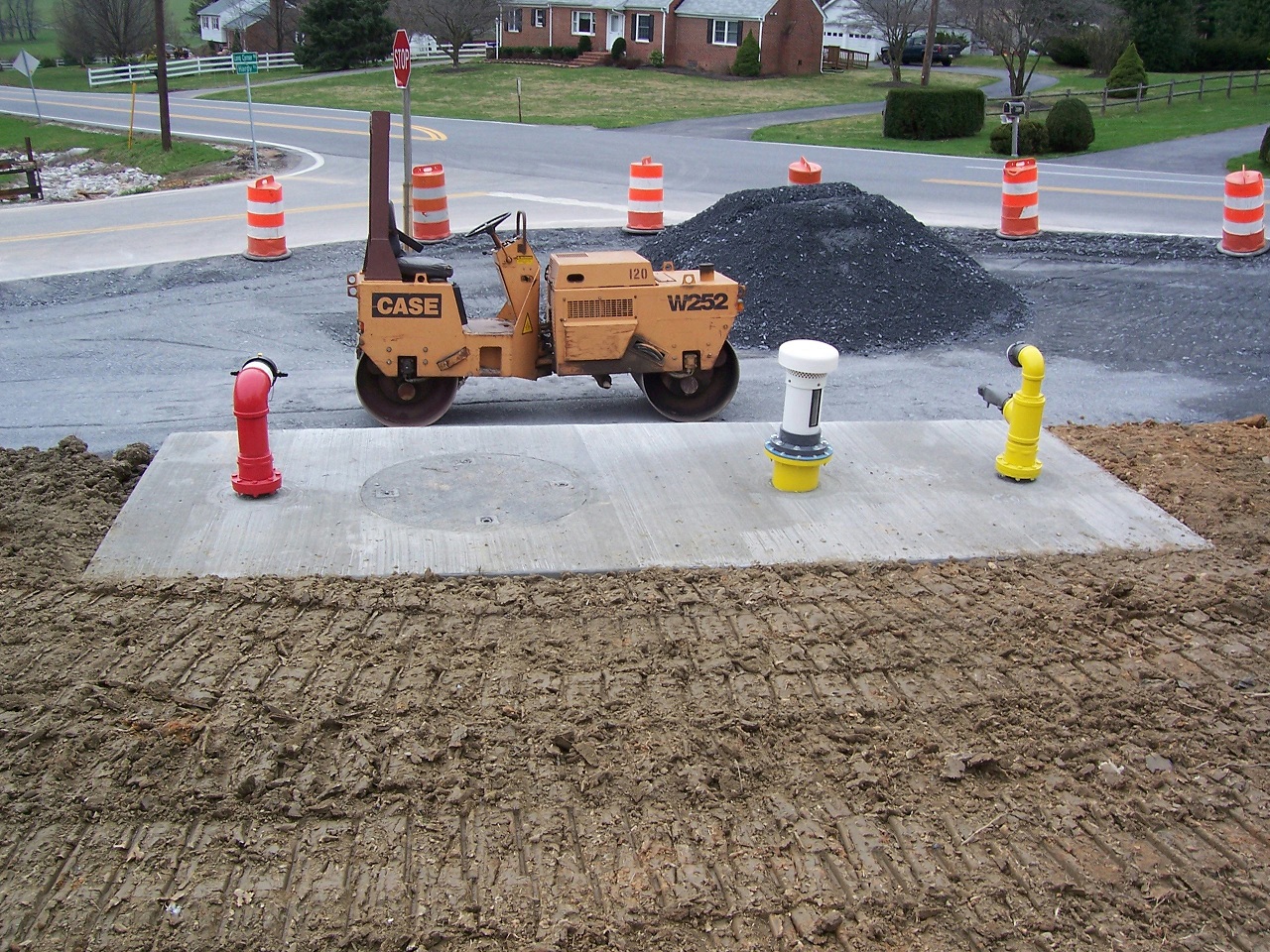
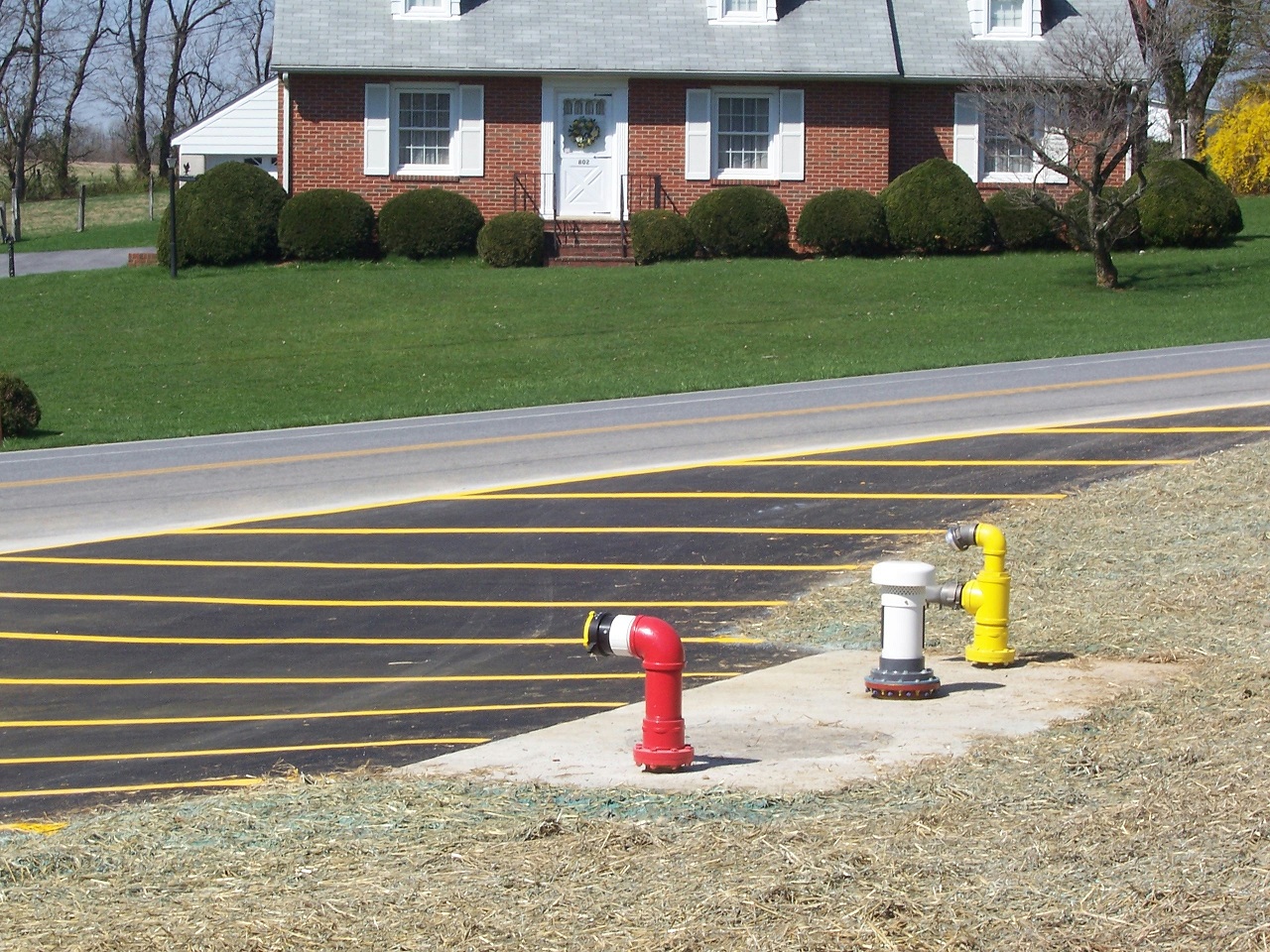
Underground water storage tanks are more aesthetically pleasing than aboveground water storage tanks installed on a tower or scaffolding. Aboveground models also required additional weatherproofing due to being exposed to environmental stresses. Maintenance of underground tanks largely involves refilling when necessary. The local fire department can more effectively carry out its mission by using a dedicated water source at a readily accessible location. The alternative would be for fire crews to access water sources such as farm ponds, in which case water containing high amounts of sediment and/or vegetation could clog pumps and hoses.
Besides the increased safety factor for nearby homeowners, underground water storage tanks can also provide lower insurance premiums. Residential areas are given Public Protection Classification scores for fire safety by the Insurance Services Office (ISO). The ISO Fire Suppression Rating Schedule figures into homeowners’ premiums for property insurance. Ratings start at Class 9, indicating the lowest level of protection. In order for a community to receive an ISO rating of Class 8 or better, and for homeowners to enjoy a benefit on their insurance premiums, there must be a water source available that can supply 250 gallons per minute for a duration of two hours. Some quick math yields a minimum requirement of 30,000 gallons, exactly the capacity of the tank installed in Howard County.

Andrew Kimos
Andrew Kimos completed the civil engineering programs at the U.S. Coast Guard Academy (B.S. 1987) and the University of Illinois (M.S. 1992) and is a registered Professional Engineer in the state of Wisconsin. He served as a design engineer, construction project manager, facilities engineer, and executive leader in the Coast Guard for over 20 years. He worked as a regional airline pilot in the western U.S. before joining the Buildipedia.com team as Operations Channel Producer.
Website: buildipedia.com/channels/operations
